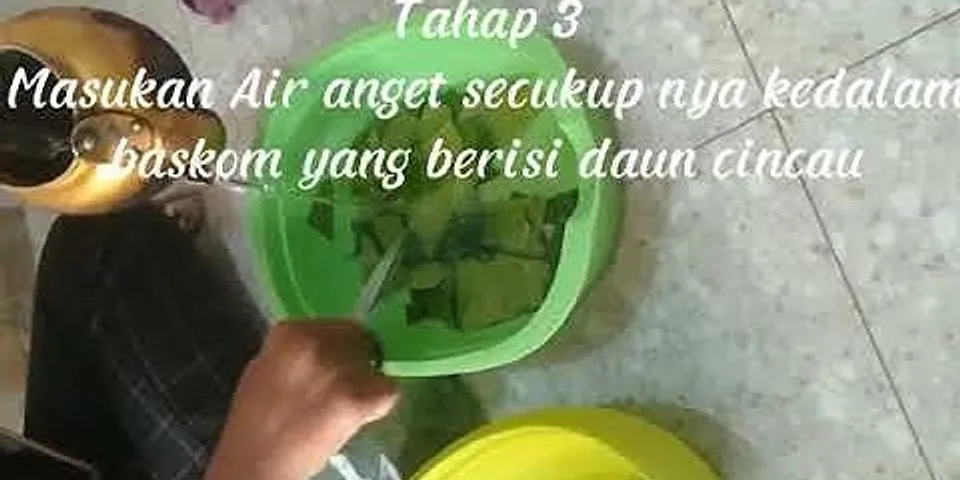American Heart Association. (2006). Exercise for stroke survivor-home exercise program after therapy. Available from http: // www.stroke.com/od/livingwithstroke.htm. American College of Sports Medicine. (1993). ACSM’S resource manual for guidelines for exercise testing and prescription. Philadelphia: Lea & Febiger. Auryn, V. (2007). Mengenal dan memahmi stroke. Kata Hati. Sleman, Yogyakarta: Ar-Ruzz Media. Despopoulos, A., Silbernagl, S. (2000). Atlas bewarna dan teks fisiologi. Alih Bahasa: Handoj. Jakarta: EGC. Dickstein, R., Hocherman, S., Pillar, T., & Shaham, R. (1986). Stroke rehabilitation: Three exercise therapy approaches. Available from http://www.ptjournalonline.com/cgi/reprint/66/8/1233.pdf. Disabled World. (2008). Health news from asia world stroke day. Available from http://www.disabled-world.com/news/asia/health-asia-4006.php. Feigin, V. (2006). Stroke. Jakarta: Bhuana Ilmu Populer. Gardiner, M. D. (1964). The principle of exercise theraphy. London : G. Bell and Sons. Graf, C. (2006). Functional decline in hospitalized older adults. American Journal Nursing, 106 (1): 58-67. Hamid. (1992). Rehabilitasi fisik/medik penderitaan stroke unit rehabilitasi medic RSUD Dr.Soetomo/FK Unair. Surabaya. Harsono. (1996). Buku ajar neurologi klinis. Yogyakarta: Penerbit Gadjah Mada Press. --------------------. Kapita selekta neurologi. Yogyakarta: Gadjah Mada University Press. Johstone. (1991). The stroke patient: A team approach. London: Churchill Livingstone. Kisner, Carolyn & Lynn, C. (1996). Therapheutice Exercise foundation and technique. (3rd ed). Philadeplhia: F.A Davis Company. Klein, D. (2004). PNF training for Assisted-living older adults: confirming positive result for functional status. The Gerontologist, 44: 507. Kozier. (1995). Fundamental of nursing. (5th ed). Addison Wisley. Kwakkel, G. (2007). Motor rehabilitation strategies after stroke: What is evidence?. From http://www.oandp.org/publications/jop/2007/2007-13.asp. Lumbantobing. (2004). Bencana peredaran darah di otak. Jakarta: Balai Penerbit Fakultas Kedokteran Universitas Indonesia. Mulyatsih, E. & Ahmad, A. (2008). Stroke. Jakarta: FKUI. Neyer, J. R., Greenlund, K. J., Denny, C. H., Keenan, N. L., & Casper, M., L. D. R, et al. (2007). Prevalence of stroke-US 2005. Available from: http://www.gov/mmwr/preview/mmwrhtml/mm5619a2.htm. Price dan Wilson. (2006). Fisiologi proses-proses penyakit. (Edisi VI). Jakarta: Penerbit Buku Kedokteran EGC. Pinzon, R., Asanti, L., Sugianto., Widyo, K. (2009). Status fungsional pasien stroke non hemoragik pada saat keluar rumah sakit. Damianus, 8(1):27-30. Puspawati, E. Y. (2010). Perbedaan efektivitas ROM 2x sehari dan ROM 1x sehari terhadap peningkatan kekuatan otot dan kecepatan waktu pencapaian kekuatan otot pasien stroke iskemik di RSD Kalisat Jember. Setiawan. (2002). Assessment pada penderita stroke. Pelatihan FT IV: Optimalisasi fungsi senso-motorik pada penderita stroke. Jakarta. Setiawan. (2007). Teori plastisitas. Workshop dimensi baru penatalaksanaan fisioterapi pada kasus stroke secara paripurna. IKM Prodi D IV Fisioterapis, Surakarta. Soeparman. (2004). Panduan senam stroke. Jakarta: Puspaswara. Wirawan, R. P. (2009). Rehabilitasi stroke pada tatanan pelayanan kesehatan primer. Majalah Kedokteran Indonesia, 59(2). Februari 2009. Jakarta. YASTROKI. (2007). Angka kejadian stroke meningkat tajam. http://www.yastroki.or.id/read.php?id=317. YASTROKI. (2008). Angka kejadian stroke meningkat tajam. http://www.yastroki.or.id/read.php?id=317. Page 2
American Heart Association. (2006). Exercise for stroke survivor-home exercise program after therapy. Available from http: // www.stroke.com/od/livingwithstroke.htm. American College of Sports Medicine. (1993). ACSM’S resource manual for guidelines for exercise testing and prescription. Philadelphia: Lea & Febiger. Auryn, V. (2007). Mengenal dan memahmi stroke. Kata Hati. Sleman, Yogyakarta: Ar-Ruzz Media. Despopoulos, A., Silbernagl, S. (2000). Atlas bewarna dan teks fisiologi. Alih Bahasa: Handoj. Jakarta: EGC. Dickstein, R., Hocherman, S., Pillar, T., & Shaham, R. (1986). Stroke rehabilitation: Three exercise therapy approaches. Available from http://www.ptjournalonline.com/cgi/reprint/66/8/1233.pdf. Disabled World. (2008). Health news from asia world stroke day. Available from http://www.disabled-world.com/news/asia/health-asia-4006.php. Feigin, V. (2006). Stroke. Jakarta: Bhuana Ilmu Populer. Gardiner, M. D. (1964). The principle of exercise theraphy. London : G. Bell and Sons. Graf, C. (2006). Functional decline in hospitalized older adults. American Journal Nursing, 106 (1): 58-67. Hamid. (1992). Rehabilitasi fisik/medik penderitaan stroke unit rehabilitasi medic RSUD Dr.Soetomo/FK Unair. Surabaya. Harsono. (1996). Buku ajar neurologi klinis. Yogyakarta: Penerbit Gadjah Mada Press. --------------------. Kapita selekta neurologi. Yogyakarta: Gadjah Mada University Press. Johstone. (1991). The stroke patient: A team approach. London: Churchill Livingstone. Kisner, Carolyn & Lynn, C. (1996). Therapheutice Exercise foundation and technique. (3rd ed). Philadeplhia: F.A Davis Company. Klein, D. (2004). PNF training for Assisted-living older adults: confirming positive result for functional status. The Gerontologist, 44: 507. Kozier. (1995). Fundamental of nursing. (5th ed). Addison Wisley. Kwakkel, G. (2007). Motor rehabilitation strategies after stroke: What is evidence?. From http://www.oandp.org/publications/jop/2007/2007-13.asp. Lumbantobing. (2004). Bencana peredaran darah di otak. Jakarta: Balai Penerbit Fakultas Kedokteran Universitas Indonesia. Mulyatsih, E. & Ahmad, A. (2008). Stroke. Jakarta: FKUI. Neyer, J. R., Greenlund, K. J., Denny, C. H., Keenan, N. L., & Casper, M., L. D. R, et al. (2007). Prevalence of stroke-US 2005. Available from: http://www.gov/mmwr/preview/mmwrhtml/mm5619a2.htm. Price dan Wilson. (2006). Fisiologi proses-proses penyakit. (Edisi VI). Jakarta: Penerbit Buku Kedokteran EGC. Pinzon, R., Asanti, L., Sugianto., Widyo, K. (2009). Status fungsional pasien stroke non hemoragik pada saat keluar rumah sakit. Damianus, 8(1):27-30. Puspawati, E. Y. (2010). Perbedaan efektivitas ROM 2x sehari dan ROM 1x sehari terhadap peningkatan kekuatan otot dan kecepatan waktu pencapaian kekuatan otot pasien stroke iskemik di RSD Kalisat Jember. Setiawan. (2002). Assessment pada penderita stroke. Pelatihan FT IV: Optimalisasi fungsi senso-motorik pada penderita stroke. Jakarta. Setiawan. (2007). Teori plastisitas. Workshop dimensi baru penatalaksanaan fisioterapi pada kasus stroke secara paripurna. IKM Prodi D IV Fisioterapis, Surakarta. Soeparman. (2004). Panduan senam stroke. Jakarta: Puspaswara. Wirawan, R. P. (2009). Rehabilitasi stroke pada tatanan pelayanan kesehatan primer. Majalah Kedokteran Indonesia, 59(2). Februari 2009. Jakarta. YASTROKI. (2007). Angka kejadian stroke meningkat tajam. http://www.yastroki.or.id/read.php?id=317. YASTROKI. (2008). Angka kejadian stroke meningkat tajam. http://www.yastroki.or.id/read.php?id=317. Page 3
The PDF file you selected should load here if your Web browser has a PDF reader plug-in installed (for example, a recent version of Adobe Acrobat Reader). If you would like more information about how to print, save, and work with PDFs, Highwire Press provides a helpful Frequently Asked Questions about PDFs. Alternatively, you can download the PDF file directly to your computer, from where it can be opened using a PDF reader. To download the PDF, click the Download link above. Fullscreen Fullscreen Off Tweet
|

Pos Terkait
Periklanan
BERITA TERKINI
Toplist Popular
#2
#3
#4
Top 8 wenn kleinigkeiten am partner stören 2022
1 years ago#5
Top 7 hilfsmittel für behinderte im alltag 2022
1 years ago#6
#7
#8
Top 6 cafe da manha pobre 2022
1 years ago#9
#10
Periklanan
Terpopuler
Periklanan
Tentang Kami
Dukungan

Copyright © 2024 kemunculan Inc.


















